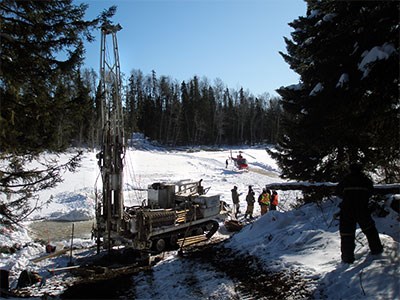The province has been silent on the future of a proposed $1.8-billion refinery in Capreol, that would have been tied to Cliffs Natural Resources' involvement in the Ring of Fire.
Cliffs stopped work on its $3.3-billion Ring of Fire development in 2013 due to a number of major hurdles. Those included a lack of agreements with First Nations in the area, and a lost appeal to the Ontario Mining Commission late last year that would have allowed the company an easement on the property to begin planning the necessary infrastructure.
When asked about the future for the planned refinery in Capreol, Michael Gravelle, Ontario's Minister of Northern Development and Mines, said the province needs to make decisions on transportation and infrastructure in the Ring of Fire before it can move on to proposed projects like the refinery.
“They are one company,” Gravelle said about Cliffs. “There are other companies with very specific proposals and interests in the Ring of Fire.”
Junior miner KWG Resources Inc. owns land in the Ring of Fire area that could be used for a transportation corridor.
“The Ontario Chamber of Commerce has said that it's quite clear that in order for the Ring of Fire to be able to be developed we need partnerships between government and communities,” said Ontario Premier Kathleen Wynne. “And that means all levels of government.”
Wynne said she was disappointed the federal government did not mention the Ring of Fire – which is estimated to contain chromite reserves worth as much as $60 billion – in the 2014 budget.
“I had a conversation with Prime Minister Harper. He knows that we're very interested in working in partnership,” Wynne said.
The province has hired Deloitte Canada as a “neutral third party” to assess transportation options in the Ring of Fire and prepare a report recommending the best route and means.
Deloitte will also help guide a development corporation the province created to encourage development in the Ring of Fire.
The Ontario Chamber of Commerce released a report Thursday, Feb. 20, that concluded that the Ring of Fire is an “unparalleled opportunity for the province to diversify its economy and solidify its place as a global leader in mining and mining technology.”
The report said the Ring of Fire is expected to generate $25 billion in economic activity across numerous sectors in the province over its first 32 years of development. In the same period, the Ring of Fire would generate an estimated $6.7 billion in government tax revenues.
But the report's authors called on provincial and federal governments to design and fund a plan to address inadequate transportation infrastructure in the region, which they cited as a significant barrier to development.




